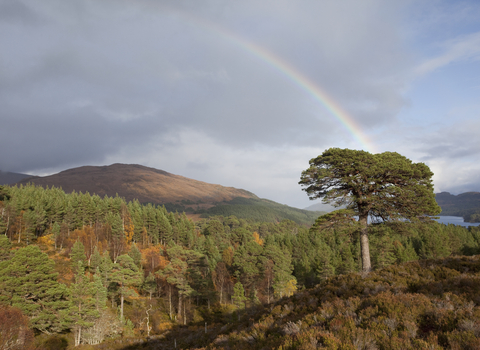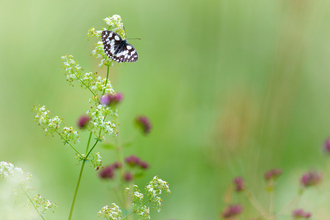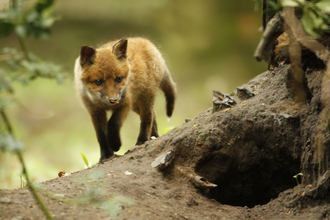They’re hundreds of years old. They’ve survived storms, wars and the countryside changing around them. And they’re pieces of living history. Imagine the tales they could tell – they’ve picnicked with kings, hidden outlaws and witnessed some of the most important moments of our past.

Dainis Ozolz, Allt Rhongyr Reserve, Brecknockshire
What makes a tree ancient?
Just like tortoises live longer than hamsters, different kinds of trees have different life spans. A yew tree must live for 900 years before it can be called ancient, whereas an oak is ancient at 400 years old and a birch is ancient at 100 years.
Some ancient trees were growing while Egypt’s pyramids were being built!
Why are ancient trees special?
Old trees, dead wood and ancient woodland is home to wildlife that lives nowhere else. These majestic giants have also been an important part of people’s lives, stories and beliefs for generations. Some of them were even growing while Egypt’s pyramids were being built!
We’re pretty lucky in the UK. We have more ancient trees than most other countries in Europe. But we need to take care of them. These special trees are under threat from diseases, changing weather and damage by humans. They are national treasures, but at the moment they don’t have the same protection as historic buildings.
Ancient tree clues
-
Fat trunks: old trees usually become wider as they age. If it takes three people to hug a tree, it’s probably ancient. Why not try it yourself?
-
Sagging branches: older trees tend to look short. Large, weighty branches start to sag instead of growing upright.
-
Fungi, moss and other hangers-on: plants, lichens and mushrooms love to grow on really old trees and take time to settle in.
-
Holes: trees often become hollow as they get older. Holes also appear where branches have rotted and fallen off.
-
Dead bits: rotting branches, damaged trunks and lost bark could be the tell-tale scars collected over hundreds of years.
-
Animals: bats, beetles, birds and many other creatures make their homes in the cracks and crevices of old trees.
-
Water pools: rain water collects in the natural groves between the trunk and large branches.
Five famous old-timers
The Fortingall Yew
Age: Probably around 3,000 years old, but could be older
Location: Fortingall churchyard in Perthshire
Claim to fame: It was once thought to be the UK’s oldest tree, although no one knows for certain just how old it is.
The Ankerwycke Yew
Age: 2,500 years old
Location: Remains of St Mary’s priory at Ankerwycke, Berkshire
Claim to fame: It was already 1,000 years old when the Magna Carta was sealed beneath its branches by King John in 1215.
The Spanish Chestnuts
Age: More than 400 years old
Location: Near Croft Castle, Herefordshire
Claim to fame: These sweet chestnuts are said to have been planted as nuts from the wrecks of the Spanish Armada in 1588.
The Major Oak
Age: 800 – 1,000 years old
Location: Sherwood Forest, Nottinghamshire
Claim to fame: Legend has it that Robin Hood hid inside the hollow trunk. Today its branches are supported by props.
Hethel Old Thorn
Age: 700 years old
Location: Beside at church at Hethel, Norfolk
Claim to fame: Cared for by Norfolk Wildlife Trust in the smallest nature reserve in the UK – it’s just big enough to surround the tree!








